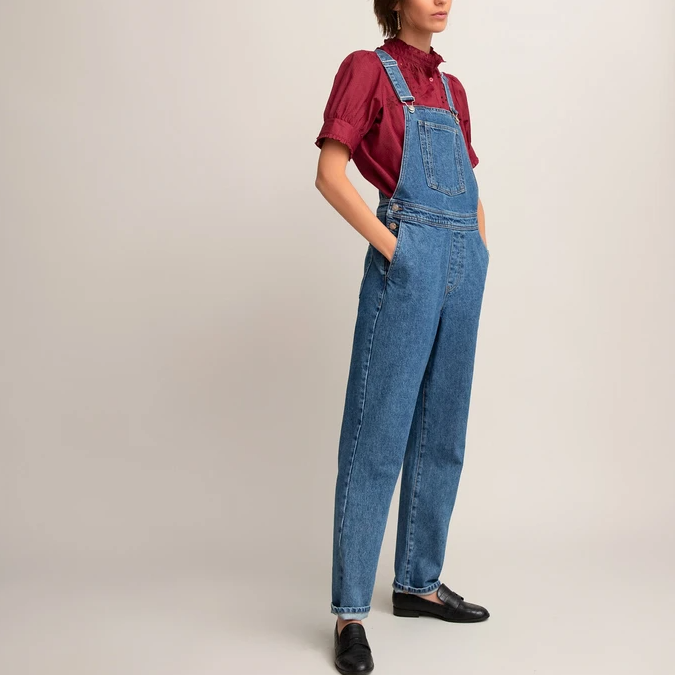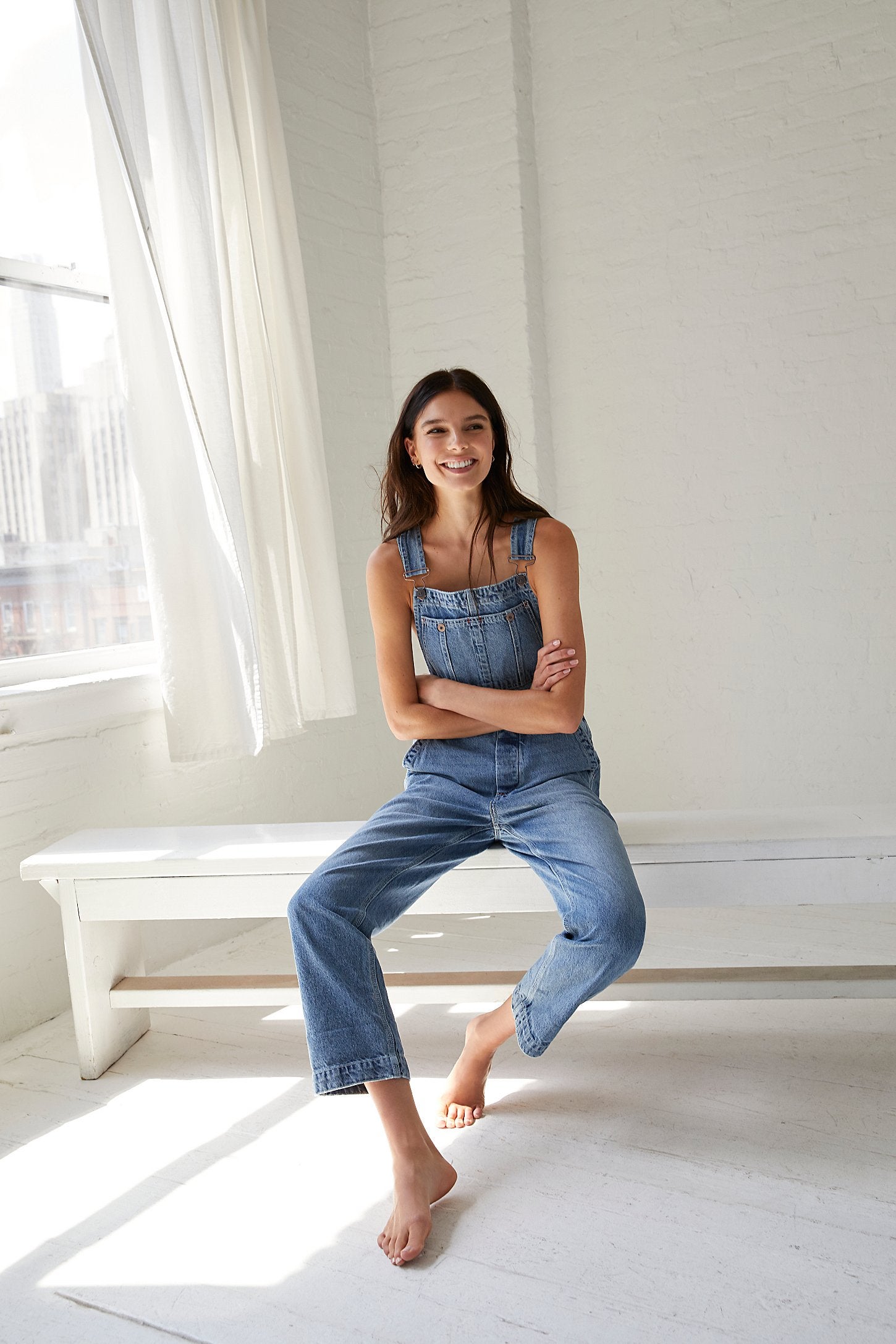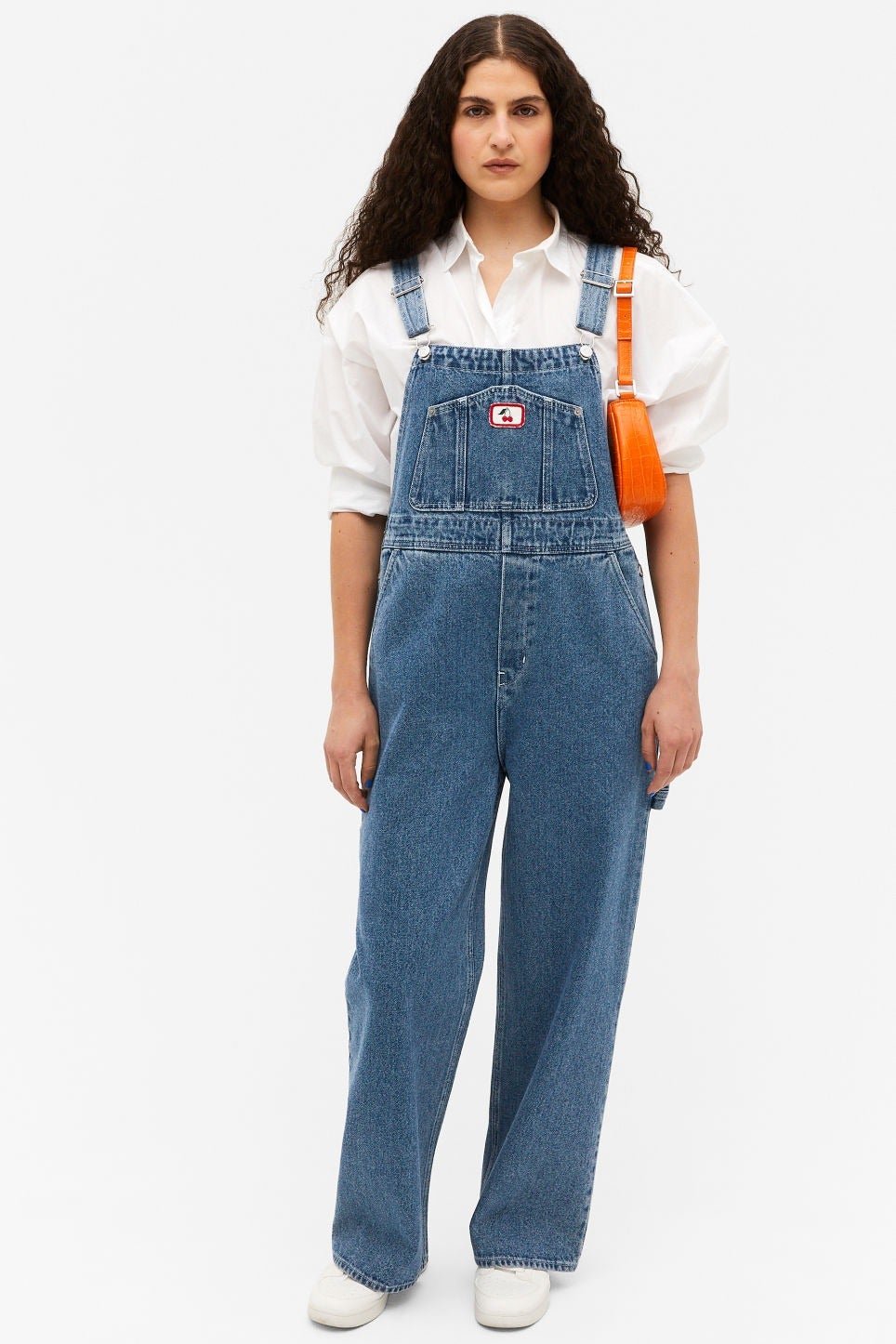Having worn loungewear for the majority of the pandemic, year three (weep) is calling for a little more sartorial structure. Though we’re not quite ready to fully break up with our elasticated waistbands, we're looking for something that divides work from play as we move into a new world of permanent hybrid working. A happy halfway house which we're pretty sure fits the bill? Dungarees.
Dungarees have been around for centuries and are one of those items from fashion history, much like the rubber boot and chore jacket, that began as practical workwear before morphing over time into their current iteration. The term 'dungaree' is said to have transmuted from 'Dungri', the Hindi name for the Indian village where the hardwearing cloth used to make the garment originated in the 17th century but bib-and-brace overalls can be traced back to the 1890s when Levi Strauss mass-produced the protective workwear. Henry David Lee of Lee Jeans is thought to have been the one to replace suspender buttons with belt loops in 1927. With the bib providing extra pockets, removing the need for tool belts and allowing workers to go hands-free, dungarees swept America, from railroads and garages to farmlands and building sites. Meanwhile the item’s working class roots continued to be utilised as a sartorial symbol that the wearer – whether Dexys Midnight Runners, Clint Eastwood or Princess Diana – was down to earth.
AdvertisementADVERTISEMENT
When women entered the workforce during WWI, the dungaree transcended its masculine associations and before long the utilitarian item featured a cinched waist, flared legs and smaller pockets to meet the demand for a more feminine silhouette. With Hollywood stars like Judy Garland and Marilyn Monroe touting a pair, dungarees crossed over from function into fashion. Since then, every decade has fallen for the one-piece, from the linen and wide-legged iterations of the ‘70s loved by Roger Daltrey, to the camp stage look of the ‘80s – a favourite of Elton John and Bananarama. They really came into their own in the ‘90s, though, appearing on a who’s who of entertainment. Kylie borrowed styling tips from her Neighbours character, mechanic Charlene, while girl groups like TLC and Cleopatra wore their dungarees in unison, teamed with chunky kicks and slogan tees. Tupac, Will Smith and Usher proved that, whether worn with a string vest or a flannel shirt, the decade’s silhouette of choice was best donned oversized and with one strap unfastened.
Now, denim dungarees seem perfectly fitting for WFH life. During spring and summer last year, green-fingered folk fortunate enough to have access to green space spent more time gardening, looking to The Good Life's Barbara for dungarees-and-silk-headscarf inspiration while planting out their seedlings (as London creative Nicola St Louis can attest). Meanwhile those of us without an allotment reached for dungarees as an extension of summer’s cottagecore escapism (the dungaree is a mainstay of the countryside, where practicality prevails, while the trend harks back to the item’s salt-of-the-earth roots). Instagram has favoured true blue overalls paired with pretty prairie blouses as demonstrated by content creator Francesca Saffri, while Joni Mitchell’s October throwback post inspired us to belt ours over a classic striped number.
AdvertisementADVERTISEMENT
As for us, we’re braving the cold in woollen coats with rollnecks and stomping boots and, come summer, teaming with prairie blouses and Birkenstocks. The beauty of dungarees is in their versatility: they’re an item from fashion’s hall of fame that transcends trends. Their popularity having waxed and waned throughout history, they’re for every season and any time and, like all good denim, they only get better with age.


